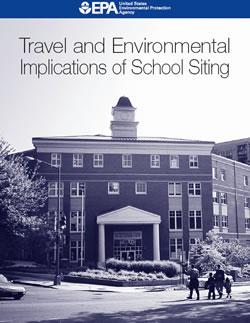
Travel and Environmental Implications of School Siting (2003) is the first study to empirically examine the relationship between school locations, the built environment around schools, how kids get to school, and the impact on air emissions of those travel choices. Over the next few decades, communities making decisions about the construction and renovation of thousands of schools will be challenged to meet multiple goals — educational, fiscal, and environmental.
The study finds that:
- School proximity to students matters. Students with shorter walk and bike times to school are more likely to walk or bike.
- The built environment influences travel choices. Students traveling through pedestrian-friendly environments are more likely to walk or bike.
- Because of travel behavior differences, school location has an impact on air emissions. Centrally located schools that can be reached by walking and bicycling result in reduced air emissions from driving.
- More data collection and research are needed to add further to the understanding of these effects. Specifically, improved data about both school travel and the built environment as well as new modeling techniques can build on these results.
This study shows that school siting and design can affect choices to walk, bike, or drive. In turn, these changes in travel choices could affect traffic congestion, air pollution, and school transportation budgets.
Learn more about smart growth and school siting.
You may need a PDF reader to view some of the files on this page. See EPA’s About PDF page to learn more.